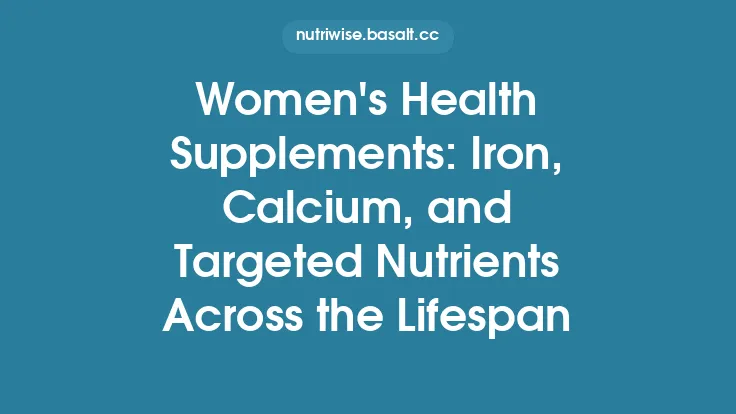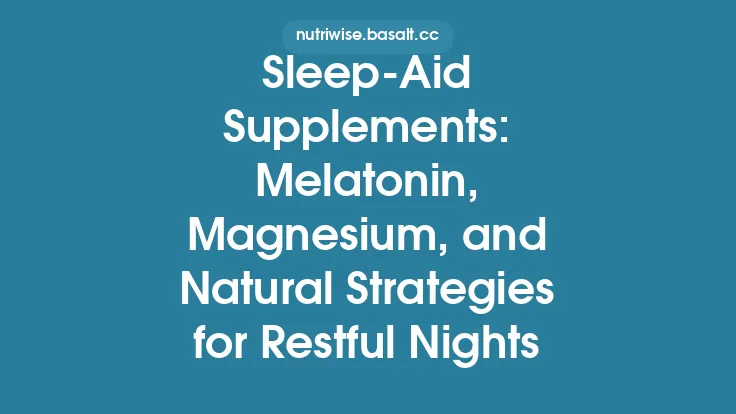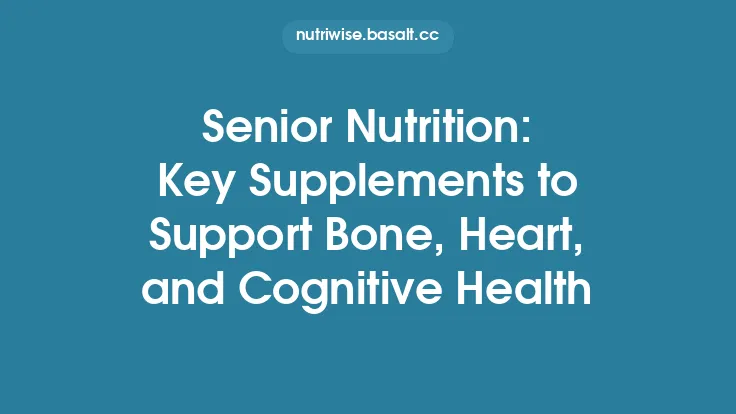Energy production is the cornerstone of daily vitality. Whether you’re powering through a demanding workday, hitting the gym, or simply keeping up with family responsibilities, your body relies on a finely tuned network of biochemical pathways to convert the food you eat into usable fuel. When these pathways run efficiently, you experience sustained stamina, mental sharpness, and a sense of overall well‑being. When they falter, fatigue, sluggishness, and a lack of motivation can set in. While a balanced diet provides the raw materials for these processes, many people turn to targeted supplements—particularly B‑vitamins, iron, and specially formulated blends—to fill gaps, support metabolic efficiency, and maintain consistent energy levels throughout the day.
The Biochemistry of Energy: How the Body Turns Food into Fuel
At the cellular level, energy is stored and transferred in the form of adenosine triphosphate (ATP). The production of ATP occurs primarily within the mitochondria through three interconnected pathways:
- Glycolysis – the breakdown of glucose in the cytoplasm, yielding a modest amount of ATP and pyruvate.
- The Citric Acid Cycle (Krebs Cycle) – oxidation of acetyl‑CoA derived from carbohydrates, fats, and proteins, generating electron carriers (NADH, FADH₂).
- Oxidative Phosphorylation – the electron transport chain (ETC) uses the electrons from NADH and FADH₂ to drive proton pumps, creating a gradient that powers ATP synthase.
Each step depends on specific co‑enzymes and mineral cofactors. Deficiencies in these micronutrients can create bottlenecks, reducing ATP output and manifesting as fatigue. B‑vitamins and iron are two of the most critical players in this system.
B‑Vitamins: The Co‑Enzyme Family That Powers Metabolism
The B‑vitamin complex comprises eight water‑soluble vitamins, each serving as a co‑enzyme or precursor for enzymes that catalyze key metabolic reactions.
| Vitamin | Primary Metabolic Role | Key Enzymatic Reactions |
|---|---|---|
| B1 (Thiamine) | Carbohydrate catabolism | Pyruvate dehydrogenase, α‑ketoglutarate dehydrogenase |
| B2 (Riboflavin) | Redox reactions | Complex I & II of ETC, succinate dehydrogenase |
| B3 (Niacin) | NAD⁺/NADP⁺ synthesis | Glycolysis, TCA cycle, fatty acid oxidation |
| B5 (Pantothenic Acid) | Coenzyme A formation | Acetyl‑CoA generation, fatty acid synthesis |
| B6 (Pyridoxine) | Amino acid metabolism | Transamination, glycogenolysis |
| B7 (Biotin) | Carboxylation reactions | Pyruvate carboxylase, acetyl‑CoA carboxylase |
| B9 (Folate) | One‑carbon transfers | Nucleotide synthesis, methylation cycles |
| B12 (Cobalamin) | Methylmalonyl‑CoA mutase, methionine synthase | Propionate metabolism, DNA synthesis |
Thiamine (B1) – The Gatekeeper of Carbohydrate Utilization
Thiamine pyrophosphate (TPP) is essential for converting pyruvate into acetyl‑CoA, the entry point for the Krebs cycle. Inadequate thiamine stalls this conversion, causing pyruvate to accumulate and forcing the body to rely on less efficient anaerobic pathways, which produce lactic acid and contribute to muscle fatigue.
Riboflavin (B2) – The Redox Engine
Riboflavin is the backbone of flavin adenine dinucleotide (FAD) and flavin mononucleotide (FMN), both of which shuttle electrons within the ETC. A deficiency can diminish the capacity of Complex I and II, directly lowering ATP yield.
Niacin (B3) – The NAD⁺ Reservoir
NAD⁺ and NADP⁺ are universal electron carriers. Their availability dictates the rate of glycolysis, β‑oxidation, and the TCA cycle. Niacin deficiency (pellagra) is historically linked to profound lethargy and dermatitis, underscoring its centrality to energy metabolism.
Pantothenic Acid (B5) – The Co‑A Builder
Coenzyme A (CoA) is indispensable for forming acetyl‑CoA from carbohydrates, fatty acids, and amino acids. Without sufficient B5, the flow of substrates into the TCA cycle is restricted, curtailing ATP production.
Pyridoxine (B6) – The Amino Acid Facilitator
B6-dependent enzymes enable the conversion of amino acids into glucose (gluconeogenesis) and the breakdown of glycogen. This flexibility ensures a steady glucose supply during prolonged activity.
Biotin (B7) – The Carboxylation Catalyst
Biotin-dependent carboxylases support the synthesis of fatty acids and the conversion of pyruvate to oxaloacetate, a critical anaplerotic reaction that replenishes TCA cycle intermediates.
Folate (B9) & Cobalamin (B12) – The Methylation Duo
Beyond their roles in DNA synthesis, folate and B12 maintain the integrity of the methylation cycle, which indirectly influences mitochondrial function and the regulation of oxidative stress.
Practical Takeaway: Because these vitamins operate synergistically, a balanced B‑complex supplement is often more effective than isolated doses. However, specific lifestyle factors (e.g., high carbohydrate intake, intense endurance training) may warrant targeted boosts of thiamine or riboflavin.
Iron: The Oxygen Carrier That Fuels Cellular Respiration
Iron’s most recognized function is its incorporation into hemoglobin, the protein that transports oxygen from the lungs to peripheral tissues. Yet, iron’s influence on energy extends far beyond blood oxygenation.
Hemoglobin and Tissue Oxygen Delivery
Each hemoglobin molecule contains four heme groups, each with an iron atom capable of binding one O₂ molecule. Adequate iron ensures optimal oxygen saturation of the blood, which is essential for aerobic metabolism. Even mild iron deficiency can reduce VO₂ max (maximal oxygen uptake), leading to early onset of fatigue during physical exertion.
Iron‑Sulfur Clusters in the Mitochondrial Electron Transport Chain
Within mitochondria, iron forms part of iron‑sulfur (Fe‑S) clusters that are integral to Complex I, II, and III of the ETC. These clusters facilitate electron transfer, maintaining the proton gradient that drives ATP synthase. A shortage of bioavailable iron impairs these complexes, directly diminishing ATP output.
Myoglobin and Muscle Oxygen Storage
Myoglobin, a muscle-specific oxygen‑binding protein, also relies on iron. It acts as an intracellular reservoir, releasing oxygen during periods of high demand (e.g., sprinting). Insufficient iron reduces myoglobin content, compromising muscle endurance.
Iron‑Dependent Enzymes in Energy Metabolism
Key enzymes such as aconitase (TCA cycle) and cytochrome P450 oxidases require iron for catalytic activity. Their dysfunction can lead to metabolic bottlenecks and accumulation of metabolic intermediates that contribute to oxidative stress.
Balancing Act: While iron is vital, excess iron can catalyze the formation of reactive oxygen species (ROS) via the Fenton reaction, potentially damaging cellular components. Therefore, supplementation should be guided by laboratory assessment (serum ferritin, transferrin saturation) and individualized dosing.
Synergistic Formulations: Combining B‑Vitamins, Iron, and Supporting Nutrients
Manufacturers have increasingly designed “energy‑boost” blends that integrate B‑vitamins, iron, and ancillary compounds to enhance absorption, reduce gastrointestinal discomfort, and support mitochondrial health.
Vitamin C – The Iron Absorption Enhancer
Ascorbic acid reduces ferric (Fe³⁺) to ferrous (Fe²⁺) iron, a more soluble form that is readily absorbed in the duodenum. Including 30–60 mg of vitamin C with non‑heme iron (plant‑based sources) can increase absorption by up to 2‑fold.
Magnesium – The ATP Stabilizer
Magnesium binds to ATP, forming Mg‑ATP, the biologically active complex used by kinases and other enzymes. A modest magnesium co‑factor (100–200 mg) in an energy blend helps maintain ATP stability and supports the activity of B‑vitamin‑dependent enzymes.
Coenzyme Q10 (Ubiquinone) – The Electron Carrier
Although CoQ10 is more commonly associated with cardiovascular health, it also functions within the ETC. Adding a low dose (30–60 mg) can complement iron‑dependent complexes, especially in individuals with marginal mitochondrial efficiency.
Adaptogenic Herbs (e.g., Rhodiola rosea, Eleuthero)
Adaptogens may modulate the hypothalamic‑pituitary‑adrenal (HPA) axis, reducing cortisol spikes that otherwise deplete glycogen stores and impair recovery. When paired with B‑vitamins, they can provide a holistic approach to sustaining energy without overstimulation.
Formulation Tips:
- Chelated Iron (e.g., ferrous bisglycinate) reduces gastrointestinal irritation and improves bioavailability.
- Methylated B‑vitamins (e.g., methylcobalamin, 5‑methyltetrahydrofolate) bypass the need for conversion steps that can be limited in certain genetic polymorphisms (e.g., MTHFR).
- Enteric‑coated tablets protect sensitive B‑vitamins from stomach acid, ensuring delivery to the small intestine where absorption occurs.
Assessing Quality: What to Look for on the Label
- Third‑Party Verification – Look for certifications from NSF International, USP, or Informed‑Sport, which confirm label accuracy and absence of contaminants.
- Transparent Dosage – The label should list the exact amount of each B‑vitamin (in mg or µg) and iron (as elemental iron). Avoid “proprietary blend” statements that obscure individual quantities.
- Form of Iron – Ferrous bisglycinate, ferrous gluconate, or iron‑polysaccharide complexes are generally better tolerated than ferrous sulfate.
- Absence of Unnecessary Additives – Artificial colors, flavors, and excessive fillers can increase the risk of intolerance.
- Stability Measures – B‑vitamins are light‑ and heat‑sensitive. Packaging in opaque, airtight containers helps preserve potency.
Safety, Dosage, and Potential Interactions
| Nutrient | Recommended Daily Allowance (RDA) | Upper Intake Level (UL) | Typical Supplemental Dose |
|---|---|---|---|
| Thiamine (B1) | 1.2 mg (men), 1.1 mg (women) | 100 mg | 10–50 mg |
| Riboflavin (B2) | 1.3 mg (men), 1.1 mg (women) | 100 mg | 10–50 mg |
| Niacin (B3) | 16 mg (men), 14 mg (women) | 35 mg (as nicotinic acid) | 20–100 mg |
| Pantothenic Acid (B5) | 5 mg | 100 mg | 10–30 mg |
| Pyridoxine (B6) | 1.3–1.7 mg | 100 mg | 10–50 mg |
| Biotin (B7) | 30 µg | 300 µg | 30–300 µg |
| Folate (B9) | 400 µg DFE | 1000 µg DFE | 400–800 µg |
| Cobalamin (B12) | 2.4 µg | No UL (low toxicity) | 5–1000 µg |
| Iron (elemental) | 8 mg (men), 18 mg (women) | 45 mg | 10–30 mg (as bisglycinate) |
- Timing: B‑vitamins are best taken with meals to improve absorption and reduce nausea. Iron should be taken on an empty stomach for maximal uptake, but if gastrointestinal upset occurs, a small amount of food (preferably vitamin C‑rich) can be added.
- Interactions:
- Calcium can inhibit iron absorption; separate dosing by at least 2 hours.
- High‑dose zinc may interfere with copper and, indirectly, with iron metabolism.
- Thyroid medications (levothyroxine) should be spaced from iron and calcium supplements.
- Antacids (especially those containing aluminum or magnesium) can reduce B‑vitamin bioavailability.
Special Populations:
- Athletes may benefit from slightly higher B‑vitamin doses due to increased metabolic turnover.
- Vegetarians/Vegans often require supplemental B12 and iron, as plant sources provide non‑heme iron with lower bioavailability.
- Older adults may experience reduced gastric acid secretion, impairing iron absorption; chelated forms and vitamin C co‑administration become especially important.
Practical Strategies for Incorporating Energy‑Enhancing Supplements
- Baseline Assessment – Begin with a comprehensive blood panel (CBC, ferritin, serum iron, transferrin saturation, B‑vitamin status if available). This informs whether supplementation is needed and at what dosage.
- Start Low, Go Slow – Introduce one supplement at a time (e.g., B‑complex first, then iron) to monitor tolerance and identify any adverse reactions.
- Consistent Timing – Align supplement intake with daily routines (e.g., B‑complex with breakfast, iron mid‑morning) to foster habit formation.
- Pair with Nutrient‑Rich Foods – A breakfast of whole‑grain oats, fortified cereal, and citrus fruit naturally supplies B‑vitamins and vitamin C, enhancing iron absorption if a supplement is added.
- Hydration and Electrolytes – Adequate water intake supports mitochondrial function and helps transport nutrients to cells.
- Periodical Re‑evaluation – Re‑test iron and B‑vitamin markers every 3–6 months to adjust dosing and avoid excess accumulation.
Emerging Trends and Future Directions
- Nanoparticle Delivery Systems: Research into liposomal encapsulation of B‑vitamins and iron aims to improve mucosal absorption while minimizing gastrointestinal side effects. Early trials suggest up to a 30 % increase in bioavailability compared with traditional tablets.
- Personalized Nutrition Algorithms: Integration of genetic testing (e.g., MTHFR polymorphisms) with metabolomic profiling can guide the selection of methylated B‑vitamins versus standard forms, optimizing individual response.
- Synergistic Mitochondrial Cocktails: Formulations that combine B‑vitamins, iron, CoQ10, and NAD⁺ precursors (nicotinamide riboside) are being explored for “metabolic resilience” in high‑stress occupations such as shift work and military service.
- Sustainable Iron Sources: Plant‑based iron chelates derived from fermented legumes are gaining attention for their lower environmental impact and comparable absorption rates to traditional ferrous salts.
Bottom Line
Energy‑enhancing supplements anchored in the B‑vitamin complex and iron address the core biochemical pathways that generate ATP, transport oxygen, and sustain mitochondrial efficiency. When selected thoughtfully—considering form, dosage, and complementary nutrients—these supplements can bridge dietary gaps, support daily stamina, and help you maintain a consistent level of vitality. As with any nutritional strategy, the most effective approach combines evidence‑based supplementation with a balanced diet, regular physical activity, and routine health monitoring. By understanding the science behind each nutrient and applying it to your personal lifestyle, you can harness the power of B‑vitamins, iron, and adapted formulations to feel energized day after day.





